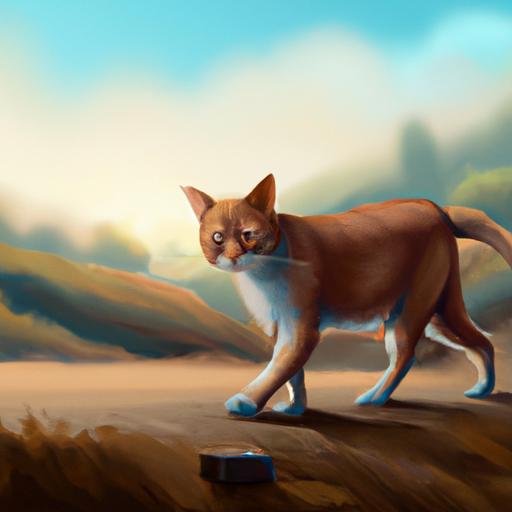Have you ever wondered why your cat won’t drink water despite being so thirsty? It’s a perplexing problem that has puzzled owners across the world.
In this article, we’ll explore the possible reasons that cats don’t drink water, and provide some helpful strategies to get your cat to start drinking again.
We’ll explore wild cat habits, the cleanliness of the water dish, the taste of the water, the water needs of cats, and more.
Read on to learn the answers to the age-old question: why won’t cats drink water?.
Table of Contents
Why Cats Won’t Drink Water?
Cats may not drink water because they naturally get their water from the food they eat, such as meat.
Also, cats may not be attracted to the taste or smell of the water, or they may not like the bowl they are given.
Wild Cat Habits
Wild cats are remarkable animals, and their senses are highly attuned to their environment.
One sense in particular that wild cats rely on is their sense of smell.
Cats in the wild have an acute sense of smell and can detect the presence of contaminants in their water, so they often avoid drinking from a dirty water dish.
Wild cats also have an instinctive sense when it comes to finding water sources.
They often seek out running water, such as streams or rivers, as it is more likely to be free of contaminants and parasites.
Wild cats also have a strong sense of taste and may only be interested in drinking water if it is fresh.
Wild cats are also skilled hunters and often catch prey that provides them with most of the water they need.
This means they don’t need to consume as much water as other animals, so they may not be as inclined to drink it.
Wild cats are also exposed to a variety of different water sources and tastes, so they are used to drinking from different sources.
All of these senses combined make wild cats incredibly efficient when it comes to finding safe sources of water.
They are able to detect the presence of contaminants and can be picky about the taste of the water they drink.
This allows them to stay hydrated without having to put in too much effort.
Cleanliness of Water Dish

Cats have a powerful sense of smell, and this can have an effect on their drinking habits.
A cat’s water dish needs to be kept clean and fresh in order to ensure they stay hydrated and healthy.
A dirty water dish can be off-putting to cats and they may refuse to drink from it.
It is important to clean and refill the water dish daily or at least every other day.
This will ensure that the water is fresh and free from any bacteria that could potentially harm the cat.
Cats may also be sensitive to the type of water dish used.
Plastic or ceramic bowls may be off-putting, so it is important to find a dish that the cat is comfortable with.
Additionally, the water dish should be placed away from the food dish, as cats may not like the smell of food mixed with their water.
By following these simple steps, cats can stay hydrated and healthy.
Regularly changing the water in the dish will ensure that cats have access to a clean and safe source of water, and this will help keep them happy and healthy.
Taste of Water
Cats have a strong sense of taste, and this can affect their preferences when it comes to water.
Cats can detect even the slightest changes in taste, as well as chemical residue, pH, and temperature.
As a result, cats can be picky when it comes to the type of water they drink.
Cats may be turned off by water that is not fresh, or by any chlorine or other additives that may be present.
They may also be sensitive to the presence of metals or other sediment in their water.
As a result, cats may prefer filtered or spring water over tap water.
It is important to make sure that cats have access to fresh, clean water, as this will ensure that they stay healthy and hydrated.
Cats may be more sensitive to the taste of water than other animals, so it is important to keep this in mind when selecting the type of water that you provide for your cat.
By providing them with filtered or spring water, you can ensure that your cat is getting the best possible water for their drinking needs.
Water Needs of Cats

It is essential for cats to stay hydrated, just like humans and other animals.
While cats dont need as much water as other animals, they still need to have access to fresh, clean water to remain healthy.
Cats are sensitive to the taste of water, so it is important that their water source is free of contaminants and parasites.
Older cats may need more water than younger cats, and cats that are more active or live in hotter climates may require more water than those that are less active or live in cooler climates.
Generally, cats need about 1 ounce of water per pound of body weight per day, though cats that are exclusively fed wet food may require less water than those that are fed dry food.
Dehydration is a serious health concern for cats, and can cause a variety of health problems.
So it is important to make sure your cat is getting enough water and that they have access to clean, fresh water that is easily accessible to them.
Encouraging your cat to drink more water can be done by providing them with wet food, as this will help them stay hydrated.
It is also important to keep an eye on your cat and make sure they are drinking enough water.
If you suspect that your cat is not drinking enough, take them to the vet for a checkup.
Strategies to Increase Water Intake
Cats are naturally independent creatures and as such, they tend to be quite particular about their water consumption.
Unlike dogs, cats are not instinctively drawn to water sources, so it can be difficult to keep them hydrated.
To ensure that your cat is getting enough water, its important to understand how to encourage them to drink more.
The first step to encouraging cats to drink more water is to provide multiple sources of water.
Cats may not be attracted to one water source, but they may be more likely to drink from more than one.
Additionally, cats may prefer running water, such as from a fountain, or still water, such as in a bowl.
Its also important to make sure that the water is clean and fresh, as cats have a strong sense of smell and taste.
Different types of water bowls and regularly changing the water may help to make the water more appealing.
To make the water even more enticing, adding tuna juice, chicken broth, or other flavorings can help cats to be more interested in the water.
Keeping the water bowl in a quiet and secure area can also help cats to feel more comfortable drinking from it.
Additionally, providing a fountain or bubbler can not only help to keep the water fresh, but also provide an interesting and engaging source of water for cats.
Its also important to monitor water intake to make sure that cats are getting enough fluids.
Using a weighing scale and regularly checking the water bowl are two easy ways to check how much water cats are drinking.
Automated feeders or water bowls can also help to keep track of consumption.
In addition to providing multiple sources of water, there are also some other tips and tricks to help cats stay hydrated.
Adding wet food to their diet can help to increase their water intake, as can providing electrolytes and encouraging cats to play in water.
Ultimately, however, its important to be aware of the risks of dehydration, as cats that do not drink enough water can suffer from serious medical complications, such as kidney failure, urinary tract infections, and more.
If youre concerned about your cats water intake, its best to consult with a veterinarian.
Final Thoughts
It’s clear that cats have a unique relationship with drinking water and can be quite finicky about it.
However, by understanding their instincts, needs, and preferences, owners can work to make sure their cats are staying hydrated.
Strategies such as providing fresh, clean water in multiple locations, regularly cleaning their water dish, and offering them a variety of water sources can help cats to drink more water.
Ultimately, cats can live healthier and happier lives when they’re well hydrated, so it’s up to us to make sure they have access to the water they need.

